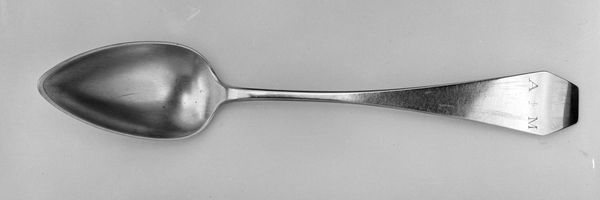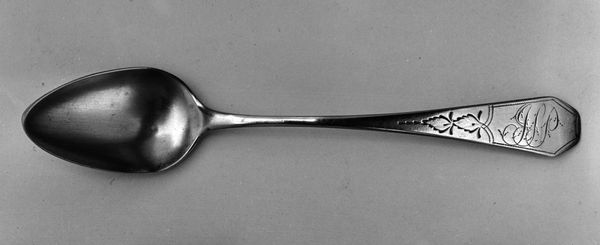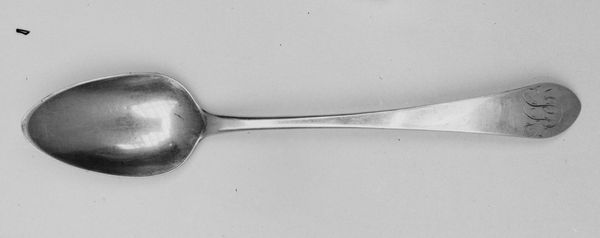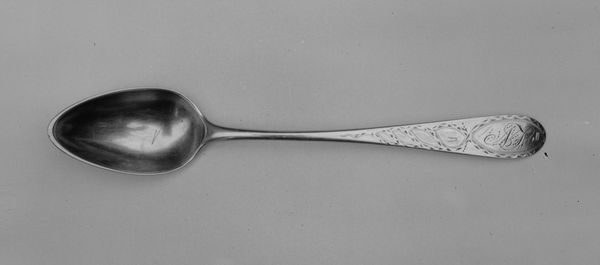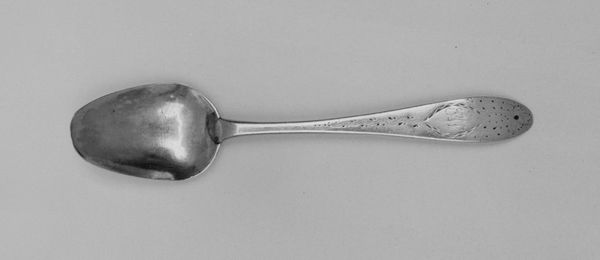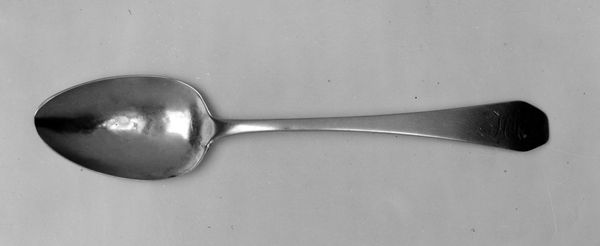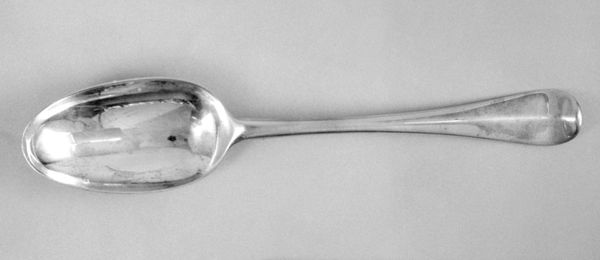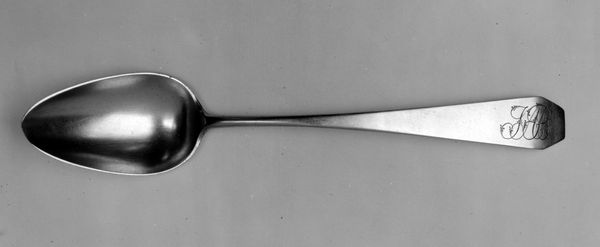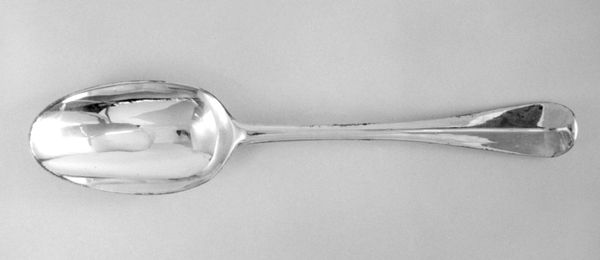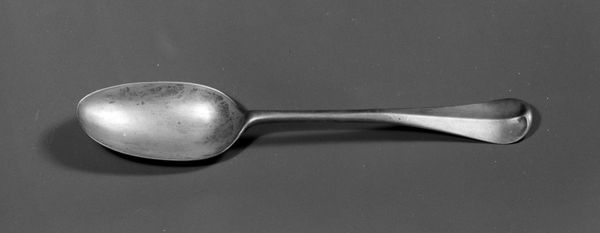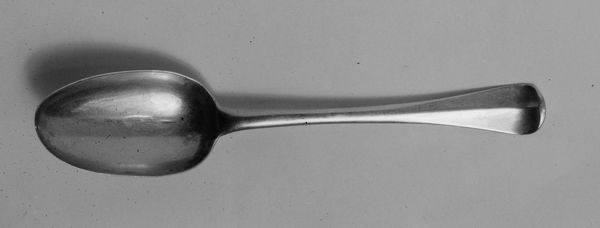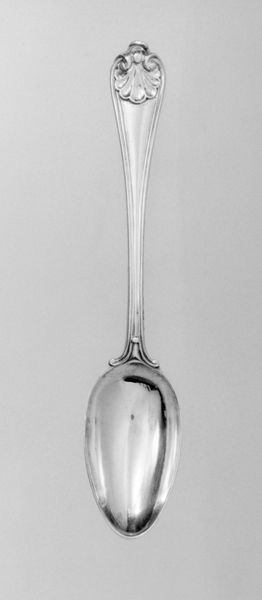
silver
silver
decorative-art
Dimensions: L. 6 in. (15.2 cm)
Copyright: Public Domain
Curator: Immediately, I notice the reflections; it seems polished, almost beckoning us closer to this quiet ritual of teatime, don't you think? Editor: Absolutely. It's such a humble object, really, yet somehow dignified. This silver teaspoon was created between 1800 and 1830, crafted by Marcus Merriman and Company. It's part of the decorative arts collection here at the Metropolitan Museum of Art. Curator: Merriman, you say? I find it intriguing how something as simple as a spoon can hold so much symbolic weight. In that period, the act of sharing tea – with sugar, of course – had these subtle undercurrents of status and sociability. The teaspoon wasn't just a tool. It was almost an emblem of polite society. Editor: I imagine it resting in someone’s hand, feeling the cool weight of the silver. And that engraved monogram...each swirl and line hints at someone's story. A silver teaspoon tells a tale of intimate connections, cozy afternoons and private moments of luxury and belonging. Curator: Exactly! Those monograms functioned a lot like heraldry—they signal belonging and social identity in subtle ways, linking back to ideas of power and lineage. It transforms daily use into a form of ritualized enactment. Editor: It's odd, isn't it, to find profound ideas within mundane things. To consider how even a teaspoon contributes, in its quiet way, to the vast web of symbols and traditions which define society. Looking at it makes you question, doesn’t it, how much of what seems ordinary around us is secretly humming with encoded meanings? Curator: Indeed, it's about revealing the echoes within, a testament to the lasting impact of even the smallest details of our shared experience. Editor: This teaspoon certainly sparks so many quiet, reflective thoughts, doesn’t it?
Comments
No comments
Be the first to comment and join the conversation on the ultimate creative platform.
